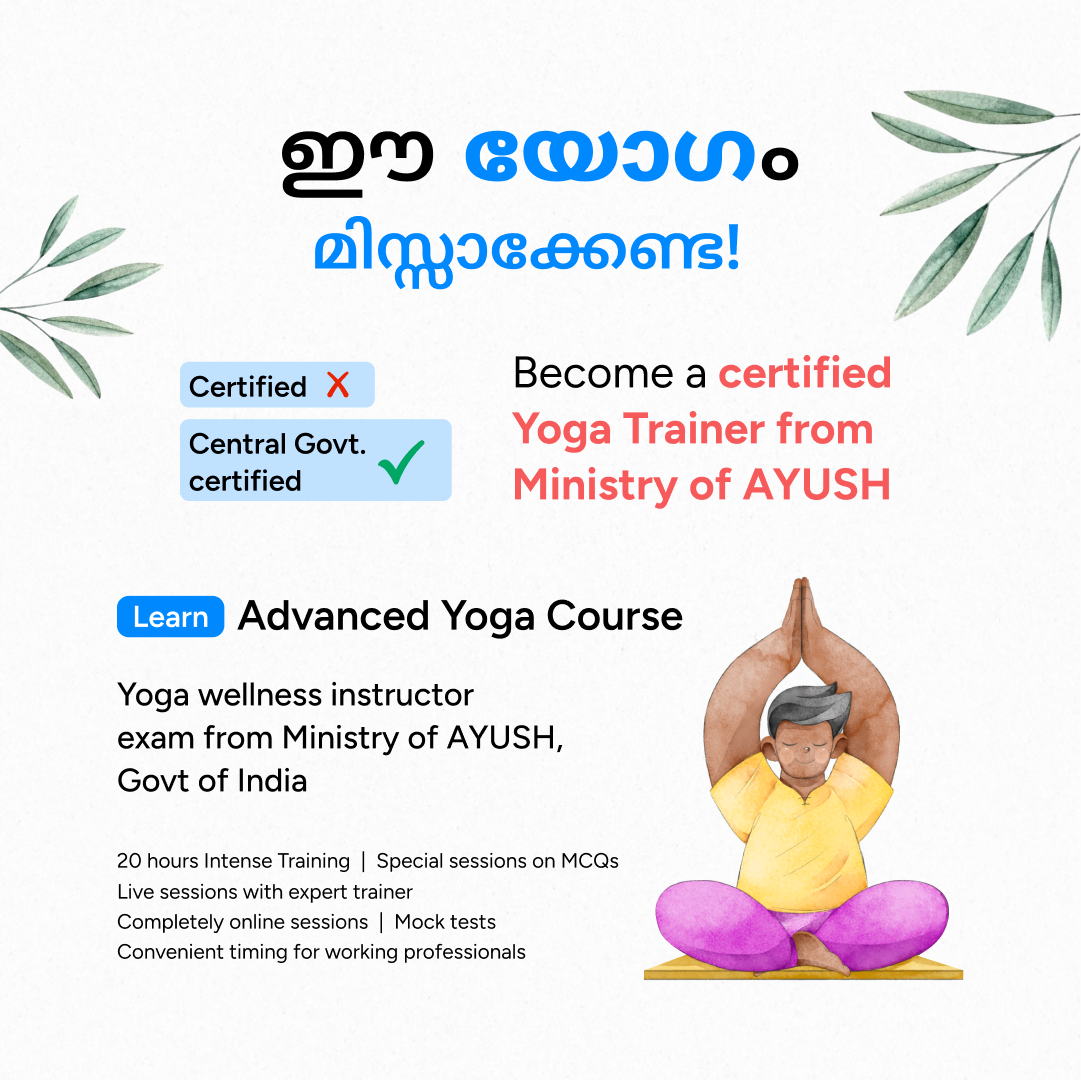Table of Contents
Nowadays many consider yoga as a physical activity and workout, but it is much more than that. One should know the ethics and principles of yoga to get a clear picture of what it depicts. “Yoga” means “unity”, “wholeness” or “connectedness” which are to be practiced not only on the yoga mat, but in life too. It is a harmonious blend between the body, mind and the spirit, wherein the body controls the actions, the mind controls intelligence and the spirit controls emotion. If one understands the purpose and the ultimate role of yoga in guiding one towards altered states of consciousness, then it is necessary to look into the ethics and principles of yoga.
The Yoga Sutras of Patanjali is an ancient text derived from the sage Patanjali. This text serves a guide on how to live one’s life in accordance with a spiritual path. The Eightfold Path, known as Ashtanga, which is mentioned in the text, focuses on the spiritual exploration of oneself. This helps to enlighten a person which in turn leads to developing a meaningful life.
Discover the Art of Teaching Yoga – Join Our Teacher Training Program!
The Yamas and the Niyamas
They are considered as the ethics of yoga. The Yamas (moral discipline) and Niyamas (observances) are yoga’s ethical guidelines laid out in the first two limbs of Patanjali’s eightfold path. They are guidelines to strive for in relating to ourselves and others. They can help us learn more about our values and what feels right to us. These off-the-mat practices of yama and niyama are of great importance if one desires to get the full benefit of yoga, namely attaining higher levels of consciousness.
The Yamas
1: Which of these is the primary goal of yoga practice?
The yamas are the first limb of Patanjali’s Eight Limbs of Yoga. These are things not to do, or restraints. The five aspects of Yama are:
- Ahimsa
- Sathya
- Asteya
- Brahmacharya
- Aparigraha
Non-violence (Ahimsa )
It means to be peaceful and not to kill other living beings. We should practice non-violence in all aspects of life. We have to restrain from physically harming others and also from having negative thoughts about others or ourselves. The prerequisites for ahimsa include abhaya (being free from fear) and akrodha (being free from anger). The practice of ahimsa includes restraint from all kinds of violence – violent thoughts, words, and actions.
Truth (Sathya)
It is the second of the five yamas and it means to be honest to oneself and others. Even though Sathya literally translates to ‘truthfulness’, it means a lot more than that. It asks us to live a truthful life. The mind must think the truth, tongue must speak the truth and the actions must reflect the truth. Sathya guides us to think, speak, and act with integrity.
Non stealing (Asteya)
It means to lead an honest life without cheating, stealing or taking unwarranted advantage. Lack, insecurity, wanting, feeling ‘incomplete’ etc. can lead to stealing. Practicing Asteya can help us feel as though we already have enough, and we satisfied within ourselves.
Sensual abstinence (Brahmacharya)
Even though Brahmacharya is often translated as ‘celibacy’, it means ‘right use of energy’. Traditionally, ‘Brahmacharya’ was meant to encourage those involved in the practice of yoga to conserve their sexual energy, in favour of using that energy to further progress along the Yogic path. It shows how we can actually use and direct our energy towards finding peace and happiness within ourselves.
Non possessiveness (Aparigraha)
It is the fifth Yama in Patanjali’s Ashtanga Yoga Path and often translates to non-greed and non-attachment. In order to truly tread the spiritual path of a yogi, we need to understand our own attachments to the material world. This yama teaches us to take only what we need, keep only what serves us in the moment, and to let go when the time is right. It helps us achieve a balanced relationship with the things that we feel are ‘ours’.
Aspiring to be a Yoga Teacher? Hone Your Skills and Get Certified with Entri App!
Become a Certified Yoga Instructor
Yoga Teacher Training Course by Entri App: Master authentic yoga techniques, earn certification, and build a successful career as a professional yoga instructor.
Join Now!The Niyamas
The niyamas are the second limb of Patanjali’s Eight Limbs of Yoga. They are things to do, or observances. The five aspects of Niyamas are:
- Shaucha
- Santhosha
- Tapas
- Svadhyaya
- Ishwara Pranidhana
Cleanliness (Shaucha)
It doesn’t mean only physical cleanliness, but also purification or sacrificing the ego. Saucha means cleanliness of body, mind, spirit and surroundings, all helping to direct us towards a pure and positive life. We pick up a lot of habits throughout our life and we should be able to recognize which of these habits help us and which doesn’t. We should let go of the unhealthy practices in our life to be happier and healthier. Saucha helps us remember who we are at our core when we burn away distractions and obstacles.
Contentment (Santhosha)
It is the second niyama described in Patanjali’s Yoga Sutras which is derived from the Sanskrit word sam, meaning “completely” or “altogether,” and tosha, meaning “contentment” or “acceptance”. It means to be happy with what one has and we know that it is not an easy one. Whatever we do, we always have the feeling that we could do or achieve more. We should be happy to accept and appreciate what we have. It is good to push ourselves to achieve our goals, but it becomes bad when we base our entire sense of peace and happiness upon this. Santosha helps the yogi to develop a better relationship with him/herself.
Self discipline (Tapas)
It means discipline, austerity or burning enthusiasm. It refers to your inner fire — both the literal heat you build in a vigorous vinyasa practice and the inner fire of drive, passion, and courage. The word Tapas is derived from the root Sanskrit verb ‘tap’ which means ‘to burn. The Bhagavad Gita (17.14–16) speaks of three kinds of tapas: austerity of body, speech, and mind. One has to be disciplined to burn away the physical, mental and emotional ‘impurities’ to pave the way to achieve greatness.
Self study (Svadhyaya)
It is the fourth Niyama of Patanjali’s Yoga Sutras. The word is made up of Sva, meaning own, self, or the human soul, and Adhyaya, meaning lesson. This can imply the practice of studying scriptures, as well as a practice of studying the Self. By studying ‘self’ and recognizing our habits and thought processes, we realize what or who we really are. The more we realize what we are not or what we are, the closer we come to attaining what we want to be.
Resignation to God (Ishwara Pranidhana)
This is a very important niyama and Swami Satchidananda says that if you’re able to master this Niyama, there is no need to practice any of the others. In this, we are advised to ‘surrender’ to the ‘Supreme Being’ or ‘higher self’, which means cultivating a deep relationship with the universe, and making each action an offering to something bigger than us.
Transform Your Life With Entri App’s Yoga Teacher Training Course
Conclusion
Real transformation happens only when we begin to practice yoga in all aspects of our life. Yamas and Niyamas serve as guides to provide us a pathway on your spiritual journey, but the way we act and react to inner and outer environment will form the basis of our lives. These virtues and practices will enhance our decisions and actions, thus allowing us to reach a higher place within ourselves.
These ethics will take time to cultivate, but with practice we will get better at applying them to our life. Instead of trying to be everything or do everything, just do one thing at a time. This will make it easier for us to keep up with the principles.
Frequently Asked Questions
What are the eight limbs of yoga?
- Yama (universal moral codes)
- Niyama (self purification by discipline)
- Asana (postures)
- Pranayama (rhythmic control of breath)
- Pratyahara (withdrawing of mind from senses)
- Dharana (Concentration)
- Dhayana (deep meditation)
- Samadhi (union with the object of meditation)
What are the different branches of yoga?
- Hatha yoga
- Bhakti yoga
- Raja yoga
- Karma yoga
- Jnana yoga























